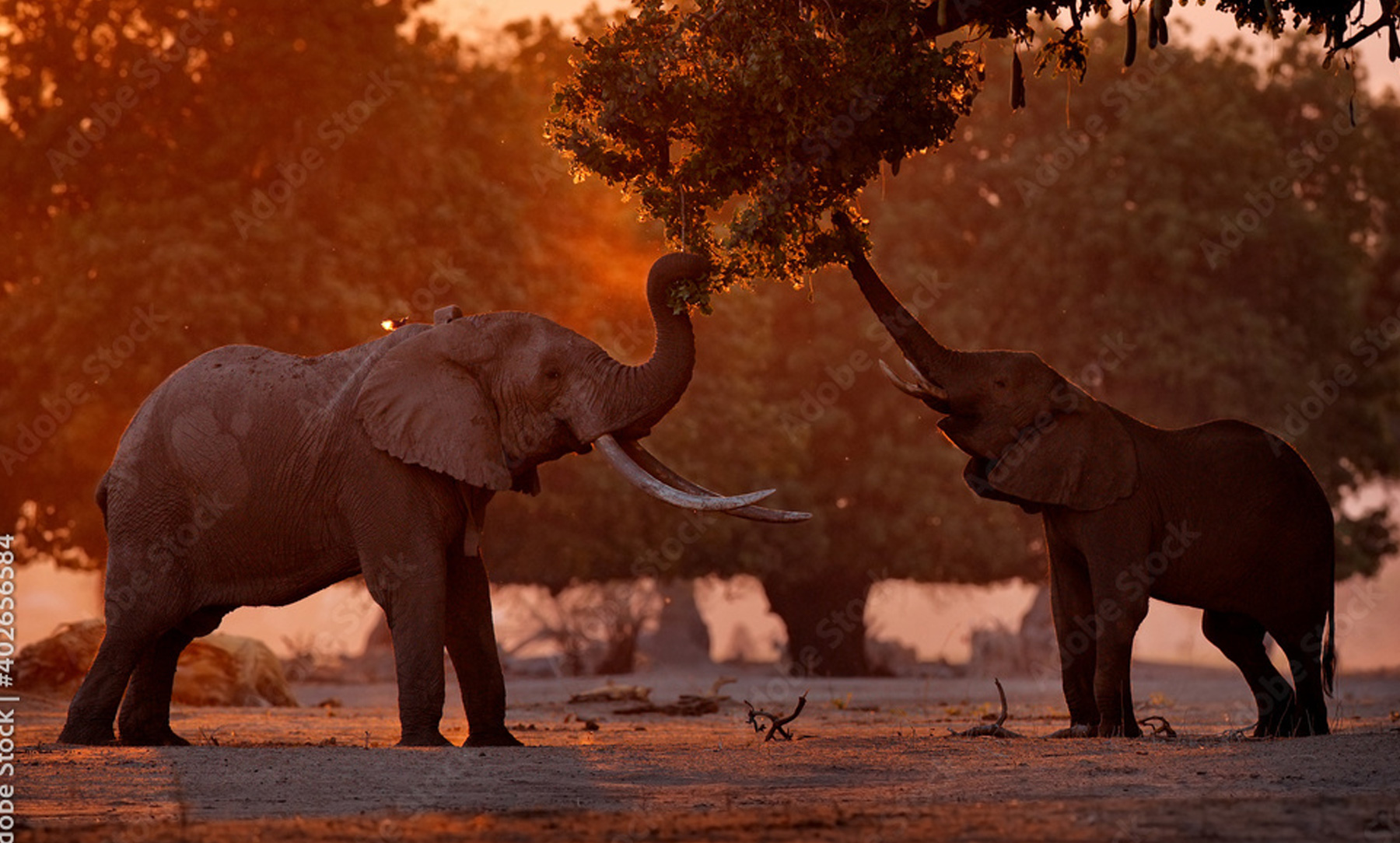
by Nomad Tanzania
Africa’s big 5: Will you spot them?
Going on a safari? Get ready to observe some of the most incredible and impressive animals in Africa, in their natural habitat.
Originally, the ‘Big 5’ was a name appointed to Africa’s most impressive creatures – a name invented by hunters who caught game. We go through each of Africa’s ‘Big 5’, with tips on how best to spot them.
African Bush Elephant
African Bush Elephants, or African Savanna Elephants are the largest land mammals on Earth. This species is the largest of the elephant family, and they require up to 70,000 calories per day to stay healthy!

A force to be reckoned with, the African Bush Elephant can be spotted due to its huge ears and greyish skin. Their families generally consist of 10 female elephants and their young. The bulls will often be present during mating season. It’s also not uncommon for African Bush Elephants to group together in a clan with other packs of females. Moreso than the other animals classed within the ‘Big 5,’ the African Bush Elephant is most likely to charge at hunters, primarily for protective reasons. Like all mothers, elephants have protective instincts, and they become particularly aggressive when they are out of view of their young.
Did you know… Elephants are one of the only mammals to recognise that they are looking at themselves in a mirror. They’re one of the most intelligent creatures in the animal kingdom.
How to spot: They’re relatively easy to spot due to their enormous size which makes them easy to observe - especially as they spend lots of time out in the open. Often African Bush Elephants are spotted grass grazing (especially in rainier seasons), although they do spend time near shrubbery which produces edible fruits.
Food: Fruits, grass, various plants
Leopard
Found normally in the Serengeti, the African leopard is secretive, intelligent, and full of prowess. Reaching speeds of just under 60km/h, the leopard can be easily missed if you blink! Generally, males are bigger boned and stockier than the females, so distinguishing genders is quite easy.

Did you know… Female leopards hide their offspring in small holes around their base. This could be burrows within shrubbery or natural holes in the ground covered with a disguised shelter.
How to spot: A pair of binoculars are the best way to spot an African leopard, as they could be hiding amongst tall pale grasses. If you hear prey calling out, then this is a sign that the leopard has been spotted. Be sure to look up at trees too, as you might spot their tails hanging down from a nearby branch.
Food: Antelope, gazelles, grassland mammals, rodents, lizards, birds
Black Rhino
African Black Rhinos are the rarest of the Big 5, in Tanzania. They are a popular game target for hunters who take off their horns to sell. They tend to dwell in thick bushy areas around the planes, often spotted against jagged rocky scenery. Recognised easily by their iconic horn, black rhinos are well equipped to dig up bushes, attack predators and defend their young.

Did you know… Rhinos can weigh up to 1.4 tonnes!
How to spot: Look out for horns which may poke out from the tall grass, or the curvature of their dark grey backs. Relatively difficult to spot, as their numbers are extremely low. Tourists have more chance of spotting the Black Rhino whilst adventuring around the Ngorongoro Crater, as the grass tends to be shorter around here.
Food: Natural growth, fruit, shoots, and saplings
African Buffalo
As is commonly depicted in any wildlife documentary, African Buffalo stick together. As there are so many predators, it’s safety in numbers for the African Buffalo! Tending to stick together in large volumes, these packs can consist of up to 1000!

Did you know... In one sitting, Adult African Buffalo can consume 40 litres of water at once!
How to spot: Often spotted in the Serengeti or the Ngorongoro Crater, the African Buffalo is easily distinguished by a symmetrical pair of horns which curve around from either side of their heads. They will often be grazing on grasslands but can also be found amidst swamps and wet areas.
Food: Grass, fruit, plants, and shrubs
African Lion
A huge 40-50% of the world’s lions are in Tanzania, making them a Tanzanian icon. Unfortunately, their numbers are slowly decreasing. As Tanzania is a lion hotspot, there is a lot of research carried out in localised areas of Tanzania, which aim to further study them in the wild, and instigating efforts to improve conservation by improving the relationships between local humans and the lions that dwell there.

Contrary to what Disney might tell us about wild lion behaviour, the lioness is the leader of the pride. Male lions can hold the power of brute force and protection but are more likely to shift to another pride to mate with other lionesses. Pride families are communal, with many lionesses sharing the care of young cubs among themselves.
Did you know… African Lions even hunt during storms. They use the loudness of the storm to their advantage, as it allows them to stay well hidden.
How to spot: It is near-certain that safari adventurers will spot a lion on a Tanzanian safari! Their roar echoes across the Tanzanian planes with heavy decibels, and their higher numbers mean tourists are bound to spot a pride out in the open.
Food: Wildebeest, antelopes, zebras, and grassland mammals
Think you can spot the Big 5?
Get yourself clued up as to what you’re looking for when you venture out on safari, and you’ll be able to easily spot the Big 5. Draw up a tally of how many you can count while on safari – and take a decent pair of binoculars to see them in super HD!
Share:
Make enquiry
